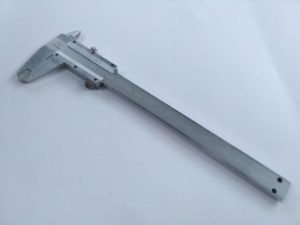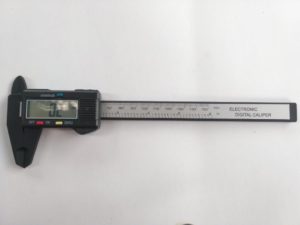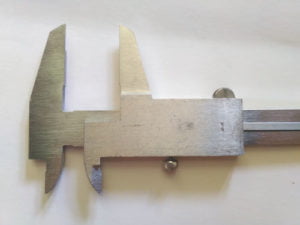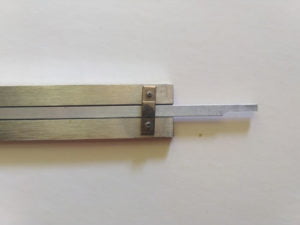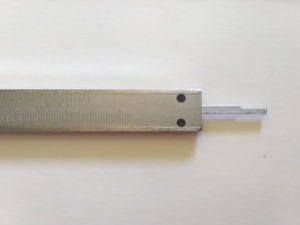A caliper is a precision measuring instrument that has the good flexibility to measure various dimensions such as thickness, outside diameter, inside diameter, length, width, and depth of an object in a single tool. It’s a very complete tool to support your multiple dimension measurement.
A caliper is made of steel. However, sometimes carbon material (plastic) can be used. In some situations when the steel can cause scratches, the plastic one is appropriate to use.
It can measure with better resolution rather than the conventional ruler.
The typical resolution of calipers ranges from 0.1 to 0.02 mm. However, the most used one is 0.02 mm. The most common measuring range is from 0 to 15 mm or 6 inches. But it can extend depending on the requirements on the job site. It’s one of the well-known linear measuring tools that we use to get a precise measurement.
Functions
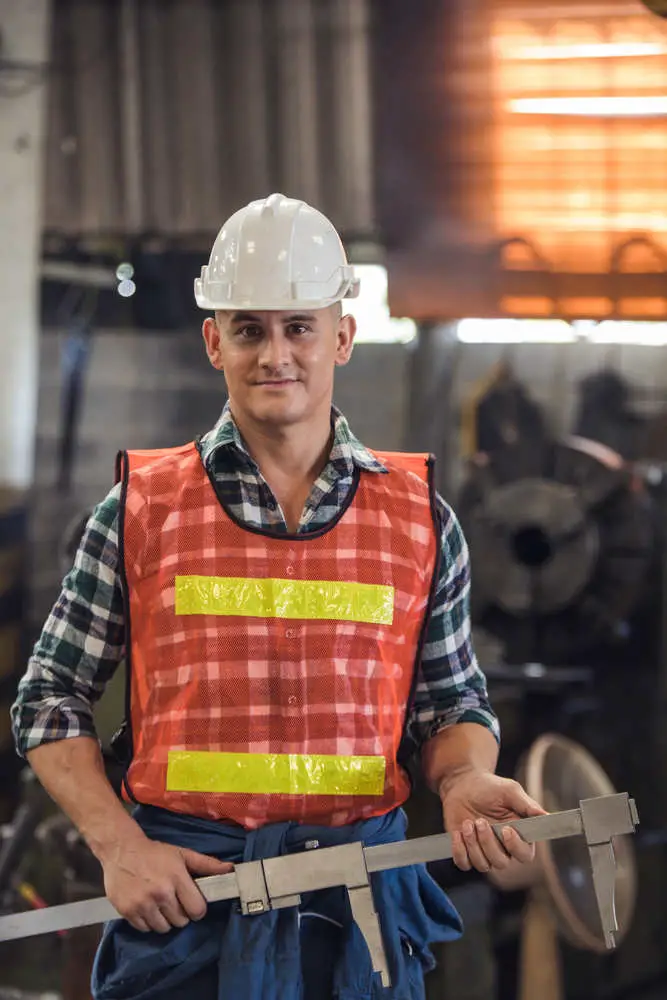
When it comes to measuring the diameter of cylindrical objects, the caliper is the right choice to use. Whether the inside or the outside diameter, with a single instrument, the task can be finished easily accurately.
To measure thickness, length, and width, you can certainly use this device. Use the bigger jaws to secure the object to find the measurement of its external dimensions.
You can use it as well for measuring depth. A caliper is equipped with a thin stick on the backside. Use that stick to measure the depth of anything you want. Make sure the depth should be around below 15mm or 6inch.
Thanks to its benefits, a caliper is one of the key measuring instruments that is usually used in various fields such as engineering, medicine, construction, household, and metalworking.
Advantages and Disadvantages
The following is a list of the pros and cons of the caliper that we compile:
Advantages:
- Accuracy and Precision: The first advantage of a caliper is that it provides accurate and precise readings.
- Versatility: Calipers are versatile instruments, they can be used for various purposes. They can be used to take internal readings, external readings, and depth.
- Durability: Since the calipers are made with strong materials like stainless steel, they are durable. You can use it for a long period of time.
- No Need of Extra Scale: For the direct reading caliper type, they have a fixed scale and a moving scale. They don’t require an extra separated scale for making a measurement.
- Price: We can easily find calipers in the market. Some are affordable, while the others are pretty expensive yet reasonable.
Disadvantages:
- Chance of Personal Error: The angle of the reading matters. There is a chance of personal error when a less experienced person uses it. Certainly, it behaves to the vernier caliper type.
- Need An Additional Scale: The indirect reading calipers require a separate ruler or related scale to calculate the measurement.
- Need for Good Eyesight: The analog model that includes vernier and dial calipers require good eyesight. People who don’t have good eyesight will have trouble reading the measurements.
- Zero Error: One of the most common drawbacks of using an analog vernier caliper is the zero error. When the jaws are fully closed, they must indicate zero reading. If they don’t indicate zero that means that it has zero error. The caliper that has zero error needs to be recalibrated or it should be repaired because it will provide inaccurate readings.
Types of Calipers
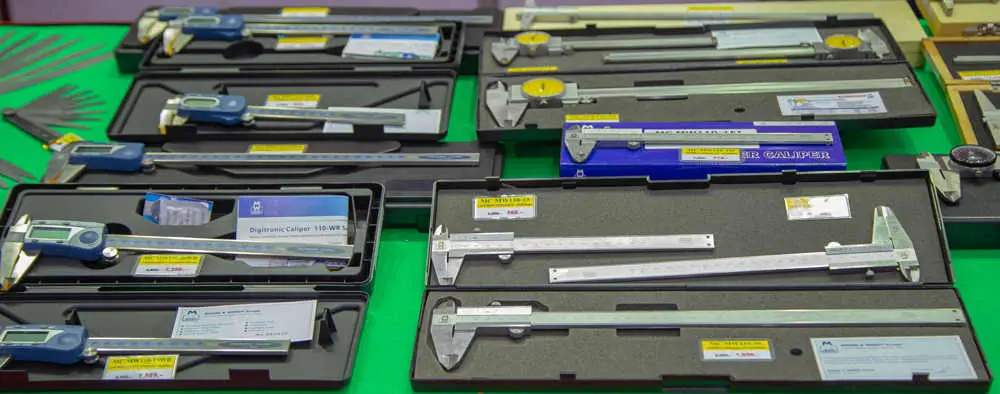
The term caliper doesn’t represent only one single shape. There are actually some models and types which are called calipers. The easiest way to differentiate them is through the reading scale, whether the scale is separated or fixed on the tool.
1. Indirect Reading Calipers
These calipers require an additional external scale to measure the distance.
- Inside Caliper: The inside calipers are designed in a way to measure the internal measurement of an object. The legs of the inside caliper are adjusted according to the object to get the desired measurements.
- Outside Caliper: The outside calipers are designed in a way to measure the external measurement of the object. Just like the inside caliper, the legs of the outside caliper are adjusted to get the desired measurements.
- Divider Caliper: The divider caliper, commonly known as a compass is used to mark locations on the surfaces. The edges of the legs are very sharp hence they can be easily used to draw arcs or circles. They are also used to measure the distance between different points on a map.
- Odd leg Caliper: The odd leg calipers have a bent leg, they are designed this way to scribe a line while the bent leg runs along the edge of the workpiece.
2. Direct Reading Calipers
Direct reading calipers have the scale right built in the calipers themselves. Although they employ a display (either mechanical or digital system), they are actually different in several factors. The direct reading calipers have the following types:
- Vernier Caliper: Like its name, a vernier caliper uses a vernier scale. It consists of two scales in which the first scale is fixed and the second scale slides.
- Dial Caliper: Even though the working mechanism of the dial caliper is complicated, however, reading a dial caliper is easier rather than reading a vernier caliper. Dial calipers employ a dial gauge to display the reading.
- Digital Caliper: The digital caliper has an electronic digital display and it provides the easiest way of reading. It allows you to switch between mm or inches in a single button.
Caliper Body Parts
An indirect reading caliper, that has a separated scale, consists of two pivoted legs that are adjusted across the points of the object that are supposed to be measured. Some calipers have long legs, some have short and some may have bent legs as well.
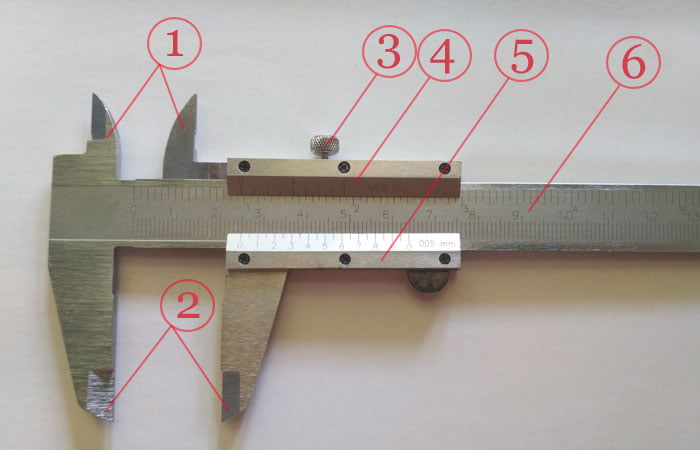
On the other hand, the direct reading caliper has two scales, one is the fixed main scale while the other is the moving one. It consists of jaws instead of legs. When the jaws are fully closed, they must indicate zero reading.
A direct reading caliper allows the measurement to be read through the vernier scale, dial, or through a digital display. All the parts of these three kinds are basically the same except the look of the reading display.
The image above is a typical vernier caliper and its parts. The list below is the explanation of each number that is marked on the image.
- Internal Jaws: The jaws to measure the internal dimension such as internal diameter.
- External Jaws: The measuring face to secure the object in order to measure its external dimensions such as length, thickness, outside diameter, and width.
- Locking Screw: When needed, you can spin the screw to tighten the object you are measuring. It functions to prevent the object from moving.
- Upper Vernier Scale: The part of the vernier scale in which the inch graduation takes place.
- Lower Vernier Scale: Similarly, it’s the part of the vernier scale where the metric graduation located if you are going to measure with the metric unit.
- Main Scale: This is the major scale. The graduation is adjusted in two positions where the upper side is for inch and the lower side is for millimeter.
The three below images are the other parts of the caliper. The most important thing to know is the stick to measure the depth. It’s the third position from the left. The rest of it is the pictures from behind.
Let’s Summarize
Whenever it’s important to have a precise measurement, we can rely on the caliper. Caliper is a perfect choice when you are going to measure a cylinder-shaped object both inside and outside diameter, length, thickness, and depth. All those tasks can be done in a nice tool. You need to save this tool at least one unit in your toolbox in case you need to measure those dimensions as precisely as possible.

